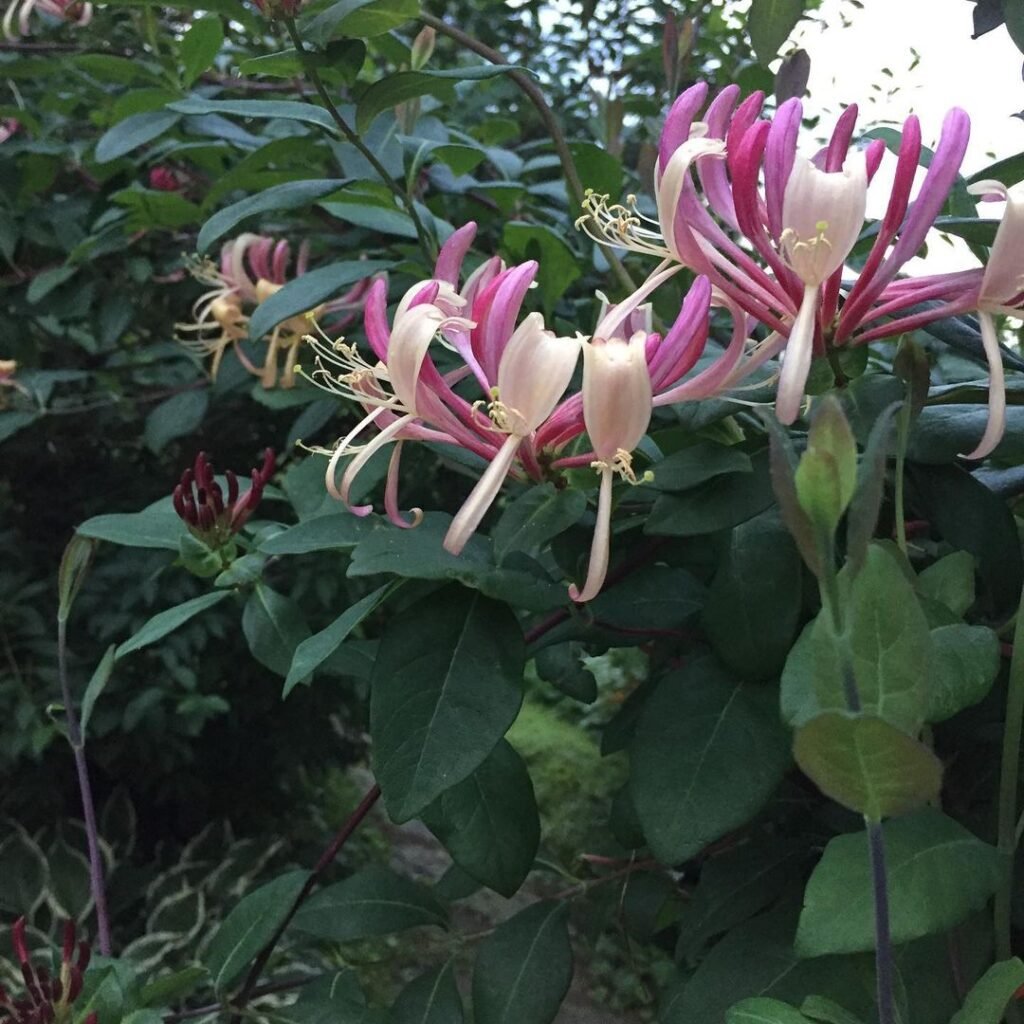Discover the beauty and benefits of purple honeysuckle. Learn how to grow and care for this fragrant climber in your garden, with tips for USA gardeners.
Purple honeysuckle is a lovely climbing plant that can add color and sweet scent to your garden. This guide will tell you all you need to know about growing and caring for purple honeysuckle in your yard.
What is Purple Honeysuckle?

Here’s a concise and verified information chart for Purple Honeysuckle:
| Attribute | Details |
|---|---|
| Botanical Name | Lonicera periclymenum |
| Common Name | Purple Honeysuckle, European Honeysuckle |
| Plant Type | Deciduous Climbing Vine |
| Zone | USDA Hardiness Zones 4-8 |
| Sun Exposure | Full Sun to Partial Shade |
| Soil Type | Well-drained, Loamy to Sandy Soil |
| Watering | Moderate; Water when top inch of soil is dry |
| Growth Habit | Twining, Climbing |
| Height/Spread | 10-15 feet (3-4.5 meters) high; 3-5 feet (1-1.5 meters) wide |
| Special Features | Fragrant flowers, attracts pollinators, and has attractive foliage |
Purple honeysuckle is a type of flowering vine. It’s known for its pretty purple flowers and nice smell. Here are some key facts:
- It’s part of the Lonicera family
- The flowers are usually purple or pink
- It can grow quite tall, often reaching 10-20 feet
- It blooms from late spring to early fall
- The plant attracts butterflies and hummingbirds
Why Grow Purple Honeysuckle?
There are many good reasons to grow purple honeysuckle:
- It looks beautiful
- It smells nice
- It can cover walls or fences
- It’s good for wildlife
- It’s fairly easy to grow
How to Grow Purple Honeysuckle
Planting
To plant purple honeysuckle:
- Choose a spot with full sun or partial shade
- Make sure the soil drains well
- Dig a hole twice as wide as the root ball
- Plant in spring or fall
- Water well after planting
Soil
Purple honeysuckle likes rich, well-draining soil. If your soil is poor, mix in some compost before planting.
Watering
Water your honeysuckle regularly, especially when it’s young. Once it’s established, it can handle some dry spells.
Fertilizing
Feed your honeysuckle with a balanced fertilizer in early spring. Don’t over-fertilize, as this can lead to lots of leaves but few flowers.
Pruning
Prune your honeysuckle after it flowers. This helps keep it tidy and encourages more blooms. Cut back about one-third of the old growth each year.
Common Problems and How to Fix Them
Pests
Aphids and scale insects sometimes bother honeysuckle. You can often wash these off with a strong spray of water. For bad cases, use insecticidal soap.
Diseases
Powdery mildew can be a problem in damp conditions. To prevent this, make sure your plant has good air flow. If you see white powder on the leaves, use a fungicide.
Yellow Leaves
If the leaves turn yellow, it might mean the plant isn’t getting enough nutrients. Try adding some compost or fertilizer.
Cool Ways to Use Purple Honeysuckle in Your Yard
- Grow it on a trellis or arbor
- Use it to cover an ugly fence or wall
- Let it climb up trees for a natural look
- Plant it near a patio or window to enjoy the smell
- Use it as a fragrant ground cover
Plants That Go Well with Purple Honeysuckle
Try planting these near your honeysuckle:
Frequently Asked Questions
Is purple honeysuckle invasive?
Some types of honeysuckle can be invasive. Check with your local garden center to make sure you’re getting a non-invasive variety.
How fast does purple honeysuckle grow?
Purple honeysuckle grows pretty fast. It can add 3-5 feet of growth each year in good conditions.
Can I grow purple honeysuckle in a pot?
Yes, you can grow honeysuckle in a large pot. Make sure it has good drainage and give it something to climb on.
How do I make my honeysuckle bushier?
Pinch off the tips of new growth in spring. This encourages the plant to branch out and become fuller.
Wrapping Up
Purple honeysuckle is a great choice for gardeners who want a pretty, sweet-smelling plant that’s not too hard to grow. With the right care, it can be a beautiful addition to your garden for many years. Whether you’re covering a fence, creating a fragrant seating area, or just want to attract more butterflies, purple honeysuckle is worth considering.
Remember, every garden is different. Pay attention to how your honeysuckle grows and adjust your care as needed. With a little patience and care, you’ll soon have a lovely, fragrant climber brightening up your outdoor space.
Learn more about growing vines in your garden
Discover other fragrant plants for your garden
Happy gardening!